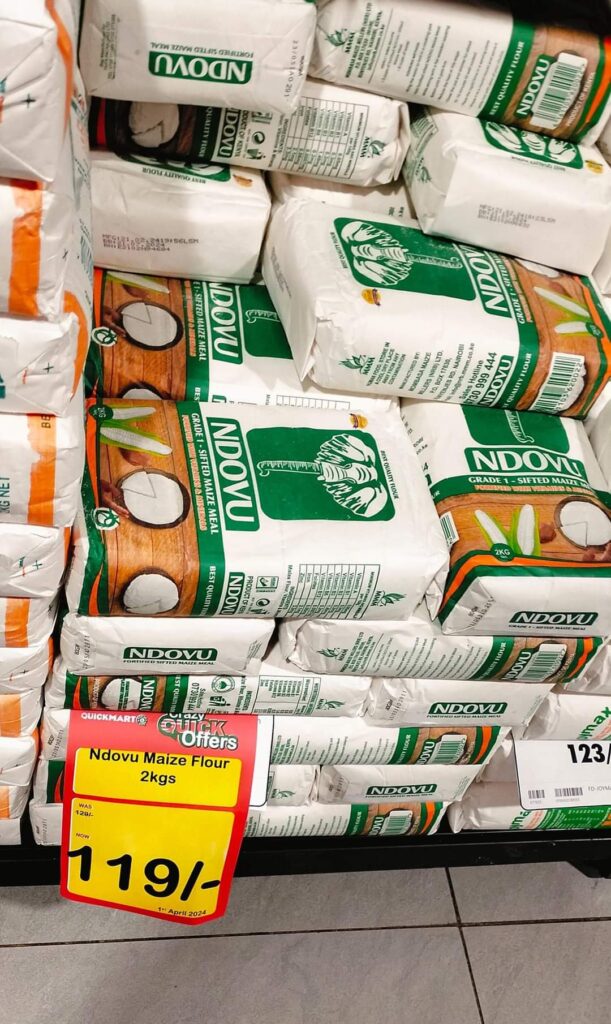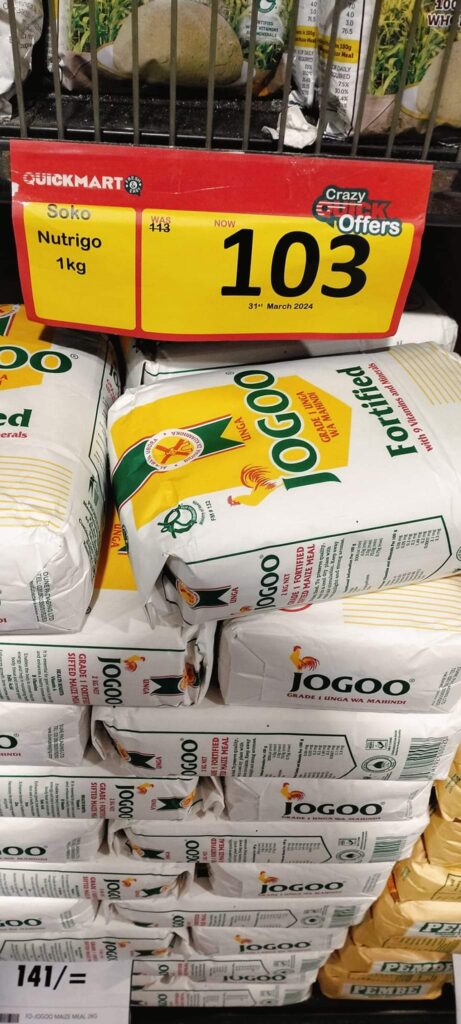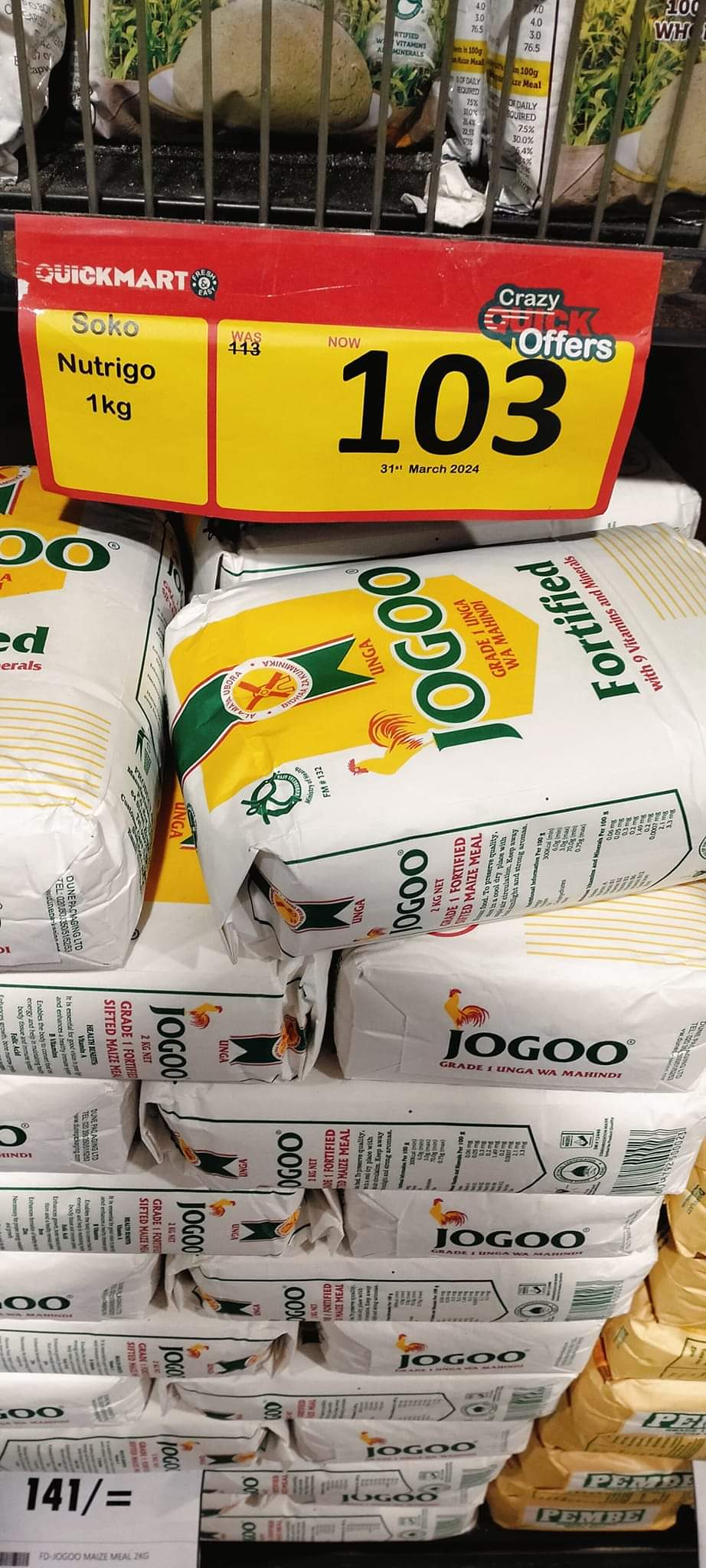The price of unga (maize flour), a staple food in Kenya, has long been a significant concern for Kenyan consumers. High prices have strained household budgets and contributed to food insecurity. However, recent developments have brought relief to many as the cost of unga has dropped. President William Ruto has promised further reductions, sparking optimism among the populace. This essay explores the economic implications of dropping unga prices in Kenya and examines President Ruto’s promise for further relief.

Economic Context
To understand the significance of dropping unga prices, it’s crucial to consider Kenya’s economic context. Agriculture plays a central role in Kenya’s economy, employing a large portion of the population and contributing to both GDP and food security. Maize is a staple crop, and its affordability directly impacts the welfare of Kenyan households. High unga prices have been attributed to various factors, including weather fluctuations, production challenges, and market dynamics.
Impact of Dropping Unga Prices
The drop in unga prices carries several immediate and long-term economic implications. Firstly, it directly benefits consumers, especially low-income households, by reducing their expenditure on food. This increased purchasing power can be allocated to other essential goods and services, stimulating demand in the economy. Additionally, lower unga prices contribute to lower inflationary pressures, enhancing overall price stability and monetary policy effectiveness.
Moreover, the reduction in unga prices positively affects food security and nutrition outcomes. Access to affordable maize flour ensures that more Kenyan families can meet their dietary needs adequately. Improved nutrition levels have wide-ranging benefits, including better health outcomes, increased productivity, and reduced healthcare costs. Furthermore, affordable unga prices mitigate the risk of food-related social unrest and political instability.
President Ruto’s Promise
President Ruto’s pledge for further drops in unga prices signals a commitment to addressing the economic challenges faced by ordinary Kenyans. This promise reflects a recognition of the importance of food affordability in ensuring social cohesion and economic prosperity. Ruto’s administration may pursue various policy measures to fulfill this promise, including agricultural subsidies, improved market infrastructure, and investment in agricultural research and technology.
Challenges and Considerations
While the prospect of further reductions in unga prices is promising, it’s essential to acknowledge the challenges and considerations involved. Agricultural production is subject to various risks, including weather extremes, pests, and diseases. Additionally, structural issues within the agricultural sector, such as limited access to inputs and land tenure issues, may hinder efforts to sustainably lower unga prices.


Furthermore, the government’s fiscal constraints and competing priorities necessitate careful resource allocation and policy implementation. Balancing the objectives of affordability, food security, and economic sustainability requires a comprehensive approach that addresses both short-term relief measures and long-term structural reforms.
The drop in unga prices in Kenya offers significant relief to consumers and holds promising economic implications. President William Ruto’s promise for further reductions underscores the government’s commitment to addressing food affordability and promoting economic well-being.
However, realizing sustained decreases in unga prices requires a multifaceted approach, encompassing policy interventions, investment in agricultural productivity, and efforts to address structural challenges within the sector. By prioritizing food security and affordability, Kenya can foster inclusive economic growth and improve the livelihoods of its citizens.
Policy Implications
President Ruto’s promise to further reduce unga prices necessitates a strategic and coordinated policy response. One potential avenue is the implementation of targeted agricultural subsidies to support maize farmers and stabilize prices. Subsidies can help alleviate production costs, incentivize increased output, and ensure a steady supply of maize to the market. However, subsidy programs must be carefully designed to avoid market distortions and unintended consequences, such as overproduction or dependency.
Additionally, investment in agricultural infrastructure is crucial for enhancing productivity and reducing post-harvest losses. Improved transportation networks, storage facilities, and market linkages can facilitate the efficient movement of maize from farm to table, reducing transaction costs and ensuring a more competitive marketplace. Furthermore, investments in irrigation systems and water management technologies can mitigate the impact of climate variability on agricultural production, enhancing resilience and sustainability.
Moreover, promoting value addition and agro-processing industries can create opportunities for higher-value maize products and generate employment along the agricultural value chain. By adding value to maize, farmers can capture a larger share of the market value and diversify their income streams. This not only increases agricultural productivity but also contributes to overall economic growth and development.
In parallel, efforts to address structural challenges within the agricultural sector are essential for long-term sustainability. Land tenure reforms, access to credit, and extension services can empower smallholder farmers and enhance their productivity and resilience. Furthermore, investment in agricultural research and technology can unlock innovation and improve farming practices, leading to higher yields and better quality maize.
Furthermore, the government can leverage partnerships with the private sector, civil society, and international organizations to amplify the impact of its interventions. Public-private partnerships can mobilize resources, expertise, and knowledge to implement scalable and sustainable solutions to food affordability and security challenges.
Collaboration with civil society organizations can ensure that policies and programs are responsive to the needs and priorities of local communities. Additionally, engagement with international partners can provide access to technical assistance, market opportunities, and financial resources to support agricultural development initiatives.
Monitoring and Evaluation
To assess the effectiveness of measures aimed at reducing unga prices, robust monitoring and evaluation mechanisms are essential. Regular data collection and analysis are necessary to track changes in maize production, prices, and consumption patterns over time.
This information can inform evidence-based policymaking and enable adjustments to strategies as needed. Furthermore, impact evaluations can assess the socio-economic outcomes of interventions, including their effects on household food security, poverty reduction, and nutrition outcomes.
Addressing the affordability of unga in Kenya requires a comprehensive and coordinated approach that encompasses short-term relief measures and long-term structural reforms. President William Ruto’s promise to further reduce unga prices reflects a commitment to improving the welfare of Kenyan citizens and promoting inclusive economic growth.
By implementing targeted policies and investments that support maize farmers, enhance agricultural productivity, and address systemic challenges within the sector, Kenya can achieve sustainable reductions in unga prices and ensure food security for all its citizens. Through collaboration with diverse stakeholders and rigorous monitoring and evaluation, Kenya can pave the way for a more prosperous and resilient agricultural sector that benefits both farmers and consumers alike.
